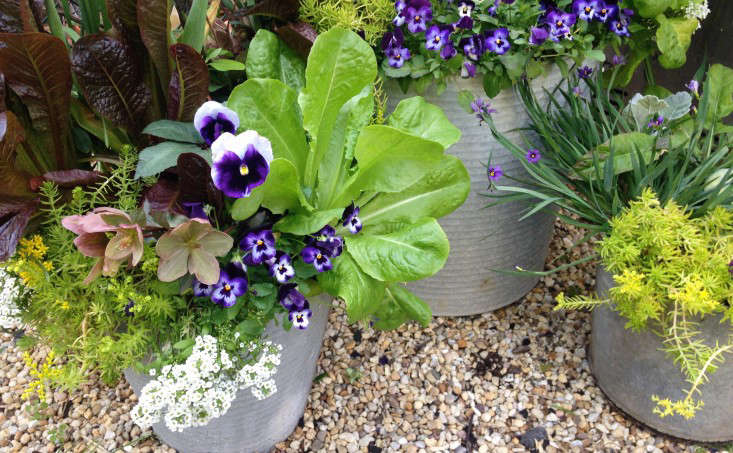Sometimes Brooklyn-based landscape designers Marni and Eric Majorelle of Alive Structures have to be salespeople for native plants, to convince reluctant clients that native species will be just as beautiful as exotics while using less water and providing habitats for birds and other wildlife.
Other times, clients just get it. For a recent project in Brooklyn’s Fort Greene neighborhood, there was no need for a sales pitch. The environmentally minded clients requested native plant gardens both in front and in back of their brownstone. No surprise that they wanted to extend their garden space with a green roof as well.
In the six years since the Majorelles founded their landscape design business, Alive Structures has revived neglected gardens, planted new gardens, beautified terraces, installed rain gardens, and created green roofs for both homes and businesses. They want each of their gardens to beautify the city in a sustainable, ecologically sound way. Do you have a gardening question Marni can answer? Ask away:
Photographs by Jeanne Rostaing unless otherwise noted.
Above: The Fort Greene backyard feels spacious and lush. A small lawn of native grasses was planted by the home’s owner. Alive Structures installed the rest of the plants less than a year ago, and already they seem well established and are starting to relax and spread out.

Above: Chokeberry is native to the Eastern United States.
Marni added borders to the lawn and planted them with natives… shrubs such as blueberry bushes, Fothergilla and Aronia arbutifolia (or chokeberry) with its gorgeous white flowers.
Above: She filled in with ferns and perennials interplanted with one of her favorite bulbs, the striking blue Camissa quamash, once used as food by native Americans.
You can order ten Camissa Quamash “Blue Melody” bulbs for $6.20 from Brent and Becky’s.

Above: Iris cristata, a Northeast native, is used as a ground cover.

Above: Last fall Marni planted a native Sweetbay magnolia surrounded by tiarella, perennial geraniums and Iris cristata, a native that thrives in woodland gardens, in the north-facing front garden. The magnolia will bloom later this summer, its creamy white flowers providing a light, lemony fragrance. The Arbor Day Foundation offers sweet bay magnolia, Magnolia Virginiana, for $10.50 (or $6.98 if you are a member).

Above: The real star of this installation, however, is only visible from inside the house. The roof of a one-story addition on the back of the home has been turned into a wildflower meadow.
Above: Viewed from the master bedroom, the brightly hued sedums and wildflowers that are planted on the roof provide a totally unexpected and delightful pop of greenery.
Above: In its construction, the green roof is a kind of horticulture version of a Napoleon pastry. It is composed of many layers. The first and most important, of course, is the roof itself. Marni says she does not take on green roof projects unless a structural engineer has certified the roof in question to be sound. Waterproofing on the roof should not be more than five years old.

Above: The roof before it became a garden. Photo courtesy of Marni Majorelle.
In the Fort Greene project, the owner had reinforced the roof with recycled wooden beams. Marni’s team then installed a root barrier, and a drainage system. On top of that they put 4 inches of lightweight soil composed of from 10 to 20 percent compost mixed with expanded shale. The sedum was purchased in pre-fabricated sections from Kawasaki Greenhouses on Long Island and installed much as you would tile your kitchen floor.
Above: To add color and interest, Marni created two berms by building up the soil to from 6 to 8 inches and planting wildflowers. Excess water drains off the roof through a recessed drain spout at the far edge of the extension. Access to the roof is a bit awkward. You have to squeeze through a window, and after you get out there you have limited space to walk. But Marni explains the roof is really intended as a viewing garden and it certainly works beautifully as that.

Above: Alive Structures is moving right along to more projects… including a 28,000-square-foot green roof on the former Pfizer factory building in Williamsburg, Brooklyn. Check it out on Marni’s blog. And stayed tuned. Gardenista will be following the project step by step. How could we resist covering the greening of the factory that gave the world Viagra?
To see more green roofs, see 5 Favorites: Summery Green Roofs in the City and Green Roof Design from Goode Green.















Have a Question or Comment About This Post?
Join the conversation